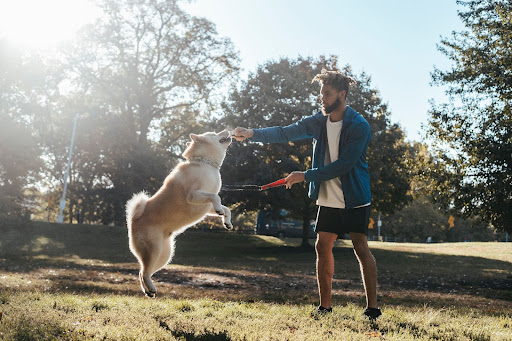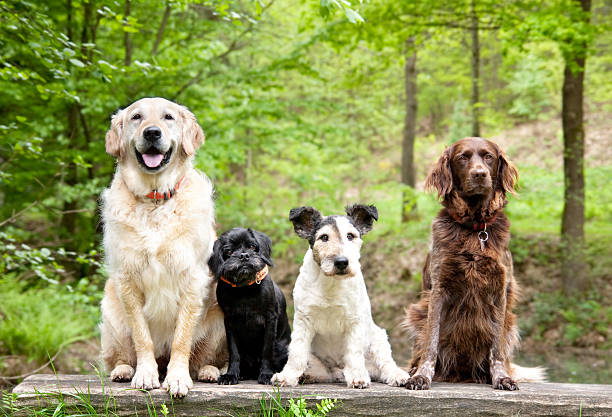6 Things to Consider When Leaving Your Dog with a Sitter or Walker

Busy puppy parents may be grateful for the many sitting and walking services that are on the market today. Hiring a dog sitter or dog walker can be convenient for you and lead to a happier and healthier life for your dog. With so many different services available, there are some considerations you need to take into account when inviting someone else to care for your dog, whether you are hiring someone to walk them, feed them, or just keep them company.
1. What type of service do you need?
There are three main types of daytime dog care services:
- Dog sitters
- Dog walkers
- Doggy daycare services
Think about how much exercise and supervision your dog requires. What is their anxiety level when left alone or when required to interact with other dogs? Do they require special attention, such as food preparation or medication administration, throughout the day? Some dog walking services schedule the dog walker to come to your home in specific increments of time that may not allow them to fulfill all of the duties and tasks your dog requires.
2. Make sure your dog is trained
An untrained dog is a sitter or walker’s worst nightmare. Harnessing an unruly dog can take up all of the allotted time in a dog walking session and leave your dog missing out on the exercise they need. Train your dog with basic commands, such as sit, stay, and come.
Your dog should be accustomed to their harness or leash. Don’t use any new or unfamiliar equipment, such as rain jackets or snow boots, with a sitter or walker.
3. Budget for the cost
Dog walking and dog sitting services can have a wide range of prices depending on your needs. Finding the most efficient budget for your situation is important so that your dog can have consistent care. If your dog is easy to handle, you may find that having a non-professional, such as a neighbor or someone in your community to care for them, is more cost-effective than using a professional walker or boarding facility. Take into account the level of care and attention your dog needs. Some modern workplaces may even offer reimbursements for dog walking fees!
4. Plan for emergencies
Leave details of your vet, emergency vet, and an emergency contact for the sitter or walker. Make sure a plan is in place if the caretaker is unable to contact you. Keep your dog’s identifying information and rabies tags attached to their harness or collar in case they become separated from the walker or escape from your home while you are out. Having an emergency plan in place can save your dog’s life, and it will give you peace of mind when you are away.
5. Do a practice run
You may set everything up for success with a dog sitter or walker, but once you’re away your dog may act differently. Some dog walking services allow you to select a dog walker remotely from an app who can let themselves into your home to walk, feed, or play with your dog. Many dogs are territorial in their living space and may not feel comfortable with a stranger coming into your home. Dogs may act aggressively or just refuse to walk or engage with their new human friend. When possible, introduce your dog to their sitter or walker and have them spend some time together. Make sure they know how your dog’s collar or harness works and that your dog is comfortable with them.
6. Set them up for success
Make it as easy as possible for your dog sitter or walker to provide great service and avoid accidents. For example, don’t leave a collar on your dog that you know he can slip out of. Ensure that leashes and clasps are functioning and in good shape. Be proactive about addressing potential problems in your dog’s behavior like aggression or resource guarding. Have plenty of treats on hand for your canine care professional to use so your dog will see that this is a positive and fun experience.
If you’re having difficulty getting your dog to accept care from a sitter or walker, check with a professional to make sure that your dog doesn’t have an underlying health issue that is affecting their behavior. Some dogs may do better with an in-home sitter or walker, while others may prefer doggy daycare during the day at a familiar vet, grooming, or boarding facility. Online vets at Vetster are always on hand to provide advice on what the best care situation may be for your dog.
 S
S
Latest Articles
- Comprehensive Guide to Fence Installation: Choosing the Right Materials and Services
- Exploring Common Home Pollutants and Their Impact
- Tips For Indian Stock Market: A Comprehensive Guide for Investors
- RRB Technician Vacancy 2024: Everything You Need to Know!
- Countdown to Election 2024: Assam’s Political Landscape

Pros and Cons of Clicker Training for Dogs

Top 8 Family-Friendly Dog Breeds to Consider When Looking for a Pet

 S
S
4 Different Ways To Let Your Dog Enjoy CBD

